
MAGIC MIRROR
An exhibition curated by Irini Karayannopoulou & Wilhelmina von Blumental
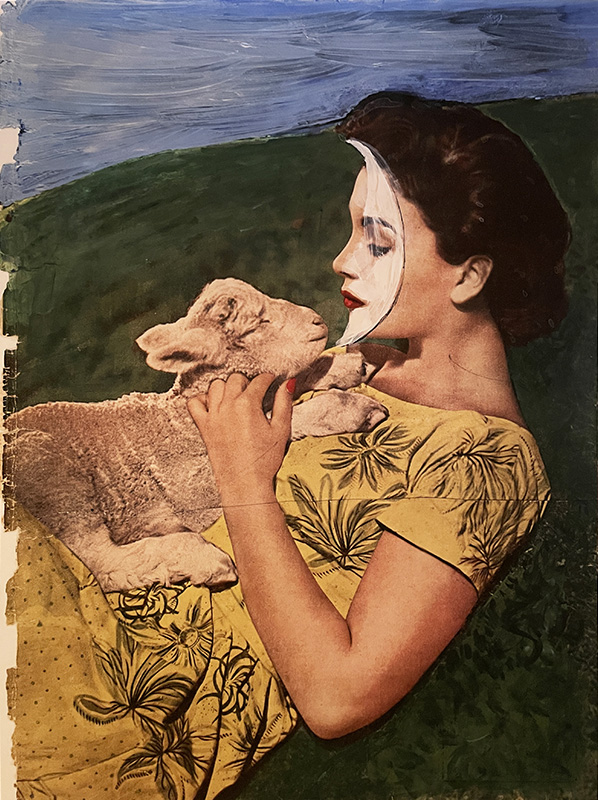

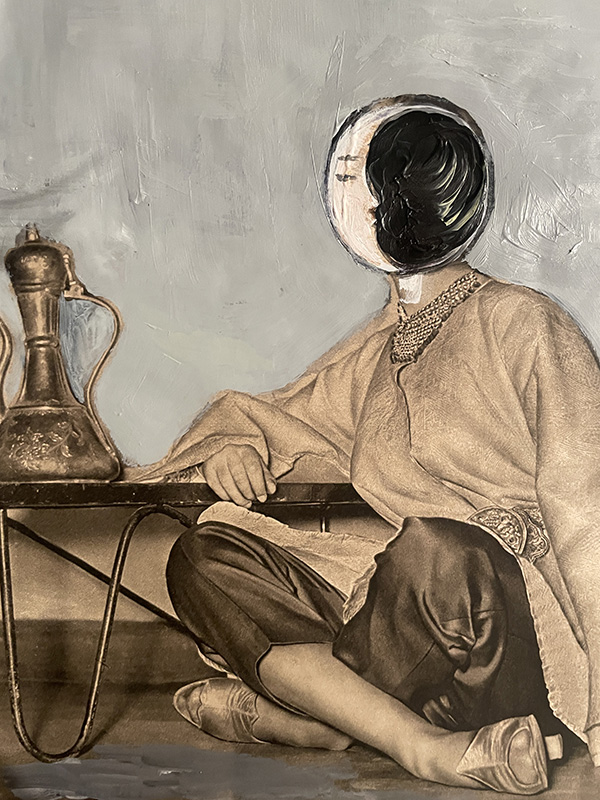
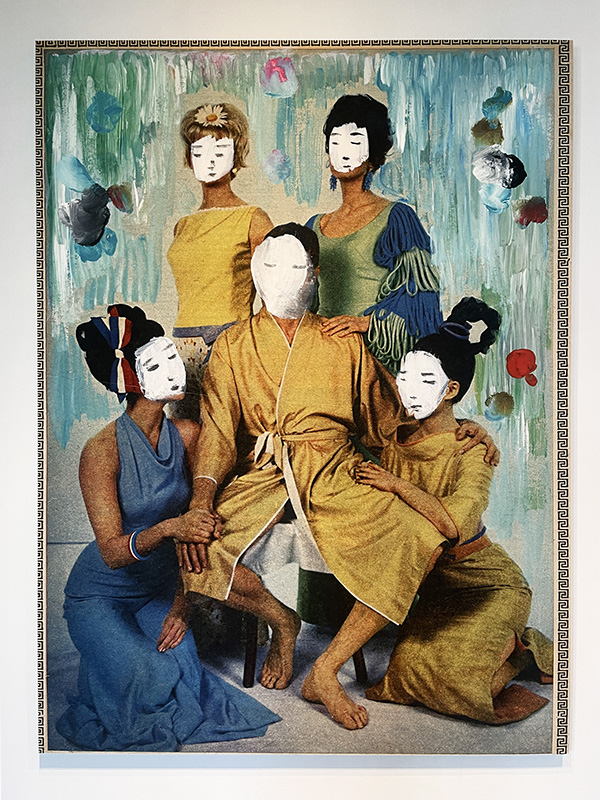
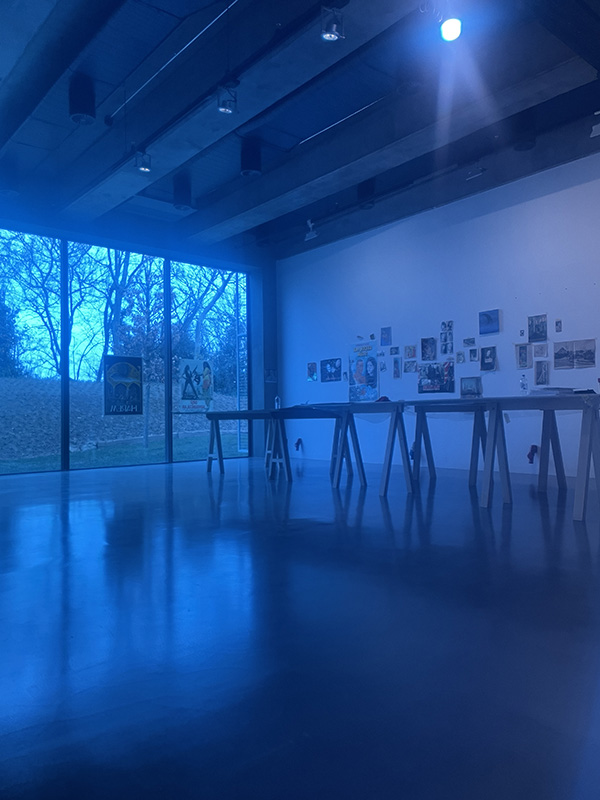
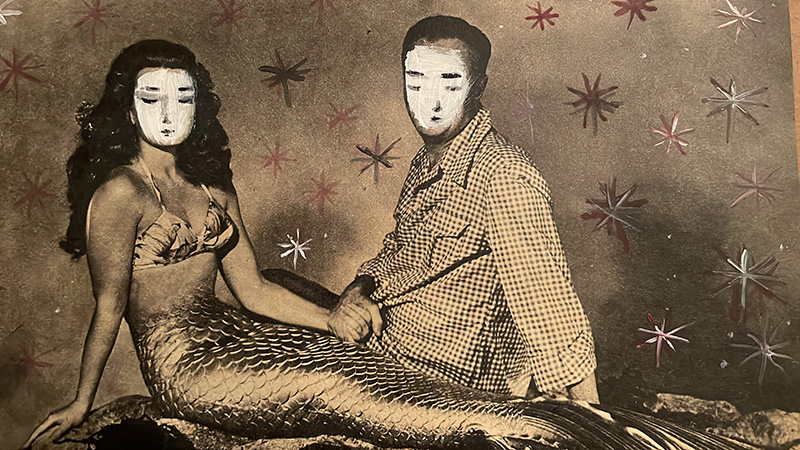
LUNA
Luna is a project created during the artist’s Clubhouse Bebek art residency with Istanbul’74.
In this new body of work, Irini Karayannopoulou interconnects show business relics with mythology, in a poetic fashion. The artist’s fascination for the ancient greek myth of the moon goddess who falls in love with a handsome sepherd, ignites the creation of a delirious series of prints, collages and paintings. Triggered by the moon‘s power to influence our mood and by the impact of women stars to society—actresses, singers, dancers and models- Irini Karayannopoulou unearths images from the 1950’s to the 1980’s and brings them back to life, refreshed.
During her three week stay in Istanbul, the artist discovers her materia prima in the city’s antique shops, flea markets and private collections. Multi-level metaphors emerge as she enlarges and reactivates outdated, mostly black and white images. She takes risks by painting directly on the original material. Quite often, her experiments in image appropriation alter the atmosphere with a few brushstrokes only. Magazines, film posters and vinyl record covers are turned into allegories or dreams. Female emancipation is being negotiated in an unapologetic way. Mermaids, chess players, beauty queens, cinema and music superstars form an elegant army of women with lust for life and for equal rights. The artist’s approach not only blurs the lines between beauty stereotypes and female empowerment but also breathes new life into the representation of the female body.
Throughout these works, the moon’s shine is omnipresent.
Irini Karayannopoulou asigns new roles to powerful, sensual female figures and reflects on the societal changes that have occured from the time that these portraits were created to the time she decided to revisit them. Finally, she enables women from a bygone era to transcent time and space with newly obtained identities, and why not, new super powers.


Animated Collages for SZAL,
a film commissioned for
Visual Persuasion
presented by Paulina Olowska
curated by Irene Calderoni
Fondazione Sandretto Re Rebaudengo
Torino / Italy
November 2 2023 – March 3 2024
Szal is an audiovisual interpretation of a painting by Polish artist Wladyslaw Podkowinski. This well known, controversial work of art depicts a fair lady riding a wild black horse. The two protagonists of this new, film version of Szal, draw inspiration by the forementioned painting and gradually enter a state of frenzy. Irini Karayannopoulou contributes to the film with a series of improvised erotic animations created with painting and collage. The artist’s materia prima is a print of the original painting by Podkowinski and a number of erotic photographs from retro magazines. Szal – in English Ecstasy- is a commission by the Fondazione Sandretto Re Rebaudengo. Film direction: Paulina Olowska. Cinematography and editing: Laura Grudniewska. Starring: Pat Dudek and Alicja Pismenko. Animated collages-paintings: Irini Karayannopoulou.

Tableaux: Painting as Stage
curated by Dereck Harris
Lea Bridge Library
London / UK
4th November – 10th December 2023
Artists: Peter Ashton Jones; Louise Bristow; Anna Choutova; Dan Coombs; Mick Finch; Dereck Harris; Annis Harrison; Alison Jones; Irini Karayannopoulou; Neal Tait.
This group exhibition includes ten painters, all of whom work in a figurative mode and utilise a stage-like space or Tableau. They all construct the pictorial space of a theatre with a central stage and feature spatial plains that are parallel to the surface of the canvas. These plains echo the space in which the viewer stands and present a parallel world where the characters portrayed appear absorbed in their own drama.
The Tableau is a device used throughout the history of painting as a form of display, often bearing the look of a constructed theatrical arrangement; an artificial space, but one which evokes the idea of a reflected world, where the audience is implicated or even has a role to play.
Manet’s painting A Bar at the Folies-Berjeres is a wonderful example of all of this at play, as the male customer who is shown approaching the Bar is reflected in the mirror behind the Barmaid, who stares blankly out at the viewer. We partially assume the role of customer as we regard the painting, and find that…… as the Courtauld website explains:
Manet has shifted the reflection to the right. The bottles on the left are similarly misaligned in the mirror. This play of reflections emphasises the disorienting atmosphere of the bustling Folies-Bergere. In A Bar at the Folie-Bergere, Manet created a complex, absorbing composition and one of the iconic paintings of modern life. Each of the painters in this proposal uses the convention of the Tableau as an entry point for their own thoughtful reflections on the political, the personal, the imaginary, or the philosophical mythopoeic residue of lived experience.
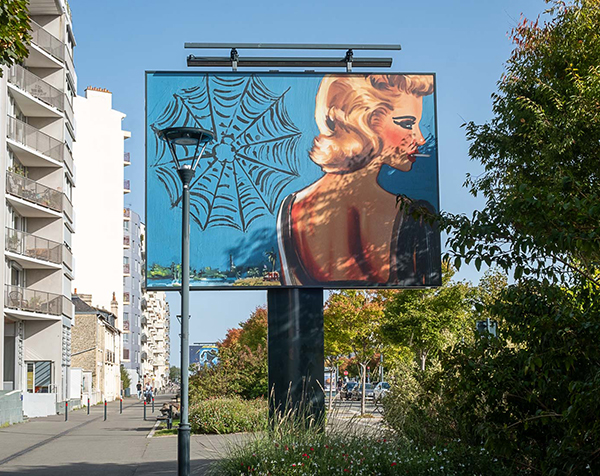
Midi Minuit Fantastique
solo exhibition
Lendroit Editions
Rennes / France
till january 04/2024
In her new solo exhibition with Lendroit Editions, Irini Karayannopoulou presents a series of post-apocalyptic poster paintings. This new body of work is inspired by Midi Minuit Fantastique, a 1960’s french magazine dedicated to horror and science fiction films. The artist paints women’s gangs in devastated landscapes, ufo’s, remnants of ancient Greece, dinosaurs and psychedelic space crafts. Her seemingly naive images seem to have escaped from the kind of dystopian fiction that served both as entertainment and as a warning of possible futures to come. The artist’s version of Midi Minuit Fantastique consists of six new paintings exhibited in the headquarters of Lendroit Editions and six gigantic posters -prints of the original paintings. The large scale posters are exhibited in Avenue Aristide Briand as part of Glaz festival and 4×3 project. Midi Minuit Fantastique will be on view till January 4. This exhibition was made possible thanks to the kind support of Maruccia Paris.
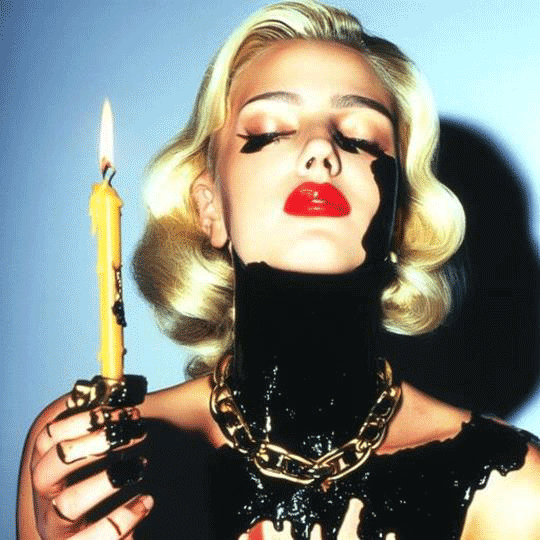
Aphrodisiac Intelligence
solo exhibition
with Polana Institute
in Hydra
till July 15/ open daily 7 to 9 pm
Polana Institute gallery from Warsaw presents Aphrodisiac Intelligence, a solo exhibition of Irini Karayannopoulou, in Keresbino, Hydra. The artist’s new body of work explores the possibilities of artificial intelligence in art production. Irini Karayannopoulou uses a collage technique that combines painting and the algorithmic capabilities of artificial intelligence (AI) to poetically explore the relationship between human and machine. On the same day, there will be a launch of the new issue of Janus magazine that consists of images created by Irini Karayannopoulou, with the contribution of AI and texts by journalist Efie Falida (Ta Nea newspaper). In Aphrodisiac Intelligence, the artist creates her raw material from scratch, using algorithm and data. After generating the digital images that interest her, she intervenes with painting and collage. As we browse the exhibition we inevitably wonder what was created by a human and what was created by the machine.
In her artistic practice, Irini Karayannopoulou uses media such as painting, animation, collage, drawing and publications. She often finds her raw material in outdated magazines and newspapers. She paints directly on the printed pages, creates collages, photographs and reprints the images of her choice, in a constant negotiation with matter, with image, with boundaries and with mixed media. Often her images return in the form of a magazine, as in the peculiar case of Janus femzine. In the 1970s there were two magazines named Janus. One focused on poetry and science fiction and was published in Madison, Wisconsin by a group of feminists. The other Janus was London based and had erotic content. Irini Karayannopoulou was inspired by both of these publications to create her own Janus, as a self-published edition in 150 copies, challenging and commenting on the stereotypical notions surrounding femininity and its roles. Each issue of Janus results from the collaboration of the artist and a guest writer. Janus femzine no3 will be presented in Hydra and contains images resulting from the painter’s experiments with artificial intelligence systems. On the occasion of these images, the journalist Efi Falida invents a scenario around the new reality of digital presence. The combination of image and speech results in an issue dedicated to the invasion of machines and to the excitement but also the concern it causes us. This charming game between words, imagination, but also machine training, is only one of two sides of the same coin. As Efi Falida writes, “You have to create the conditions for the surprise and then accept the consequences.”
Opening reception: Monday, June 19, 2023 6pm
Keresbino Hydra, D.Rafalia-Ath. Miaouli, Hydra 18040
The event is kindly sponsored by heteroclito cave et bar a vins, KIR-YIANNI, ΦΙ Fatourada and MACART.

Light snacks and heavy make-up,
a double solo exhibition of Hippolyte Hentgen
and Irini Karayannopoulou
at a.antonopoulou gallery
Opening: Wednesday 22/03, 7–10 pm.
Through 28/04/2023
“In their joint show, Irini Karayannopoulou and the French artistic duo Hippolyte Hentgen deluge the gallery space with images: tiny ones, huge, monumental, moving images, others that one can be listened to, a few camouflaged behind other images, sometimes even within them.
Under the title Light snacks and heavy make-up, the exhibition of the three women reveals a piece of their shared artistic universe, the birthchild of an unconscious artistic kinship and a romantic online friendship, which developed among them as an imperative need.
The exhibition presents series of paintings, collages and videos that function as a unified environment and compose an ode to the shared idiosyncratic art of the duo from France and the Greek visual artist.
Their practice remains intrinsically feminine, not in terms of material, pattern and form, but rather because their work is completely surrendered to the female gaze. This surrender can’t but be attributed to the gaze of all three artists, a gaze exhaustively exercised and unassumingly unbridled by male perspective.
The works in the exhibition, with a strong element of humour, poignancy, pop references, incorporate the collage technique in a broad and contemporary sense, not far from the qualities Lucy Lippard recognizes in it in 1980: a dialectic that exposes social and cultural myths, decentralizes the dominant discourse, with a spirit, however, both unifying and inclusive.
Hippolyte Hentgen present a series of works where they reconstruct the narratives of the female body, as this appears in everyday culture and comics, and also as they experience it themselves through movement and painting gesture. At the same time, Irini Karayannopoulou presents a new series of oil paintings, faithful though to her characteristic way of composing image through varied and unexpected visual fragments. Her earlier collages coexist with new and bold painting compositions resuming a dialogue she orchestrates around countless elements, fetish objects, female body and sexuality, and humour.”
*The above text is composed by abstracts from the main exhibition text written by curator, writer and researcher Christina Petkopoulou.
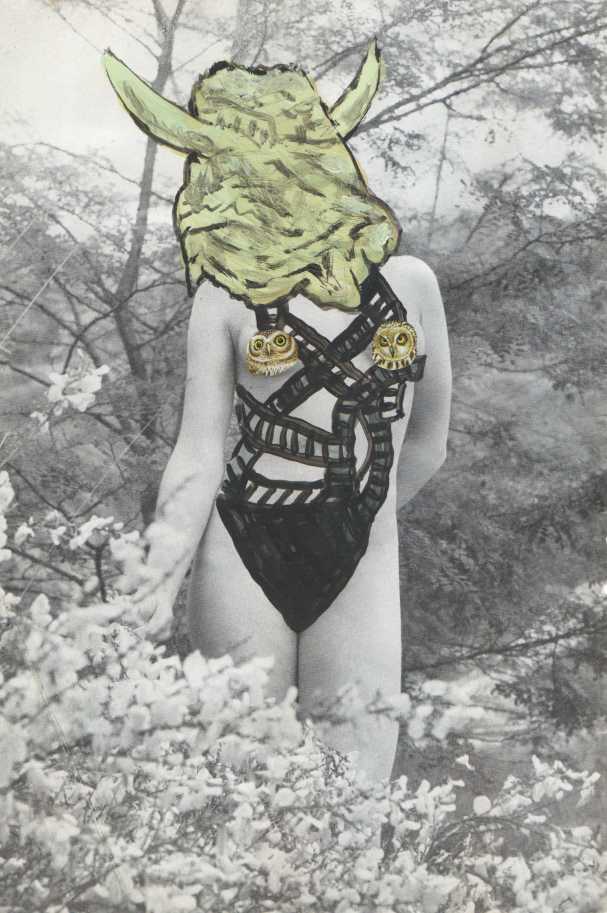
Selected works from Janus II were exhibited on Artsy
with London based Black Bird Rook.
“In the give-and-take conversation,
a lovely girl gives a little more fun than she takes.”
Thomas, K., Secrets of Loveliness, 1964
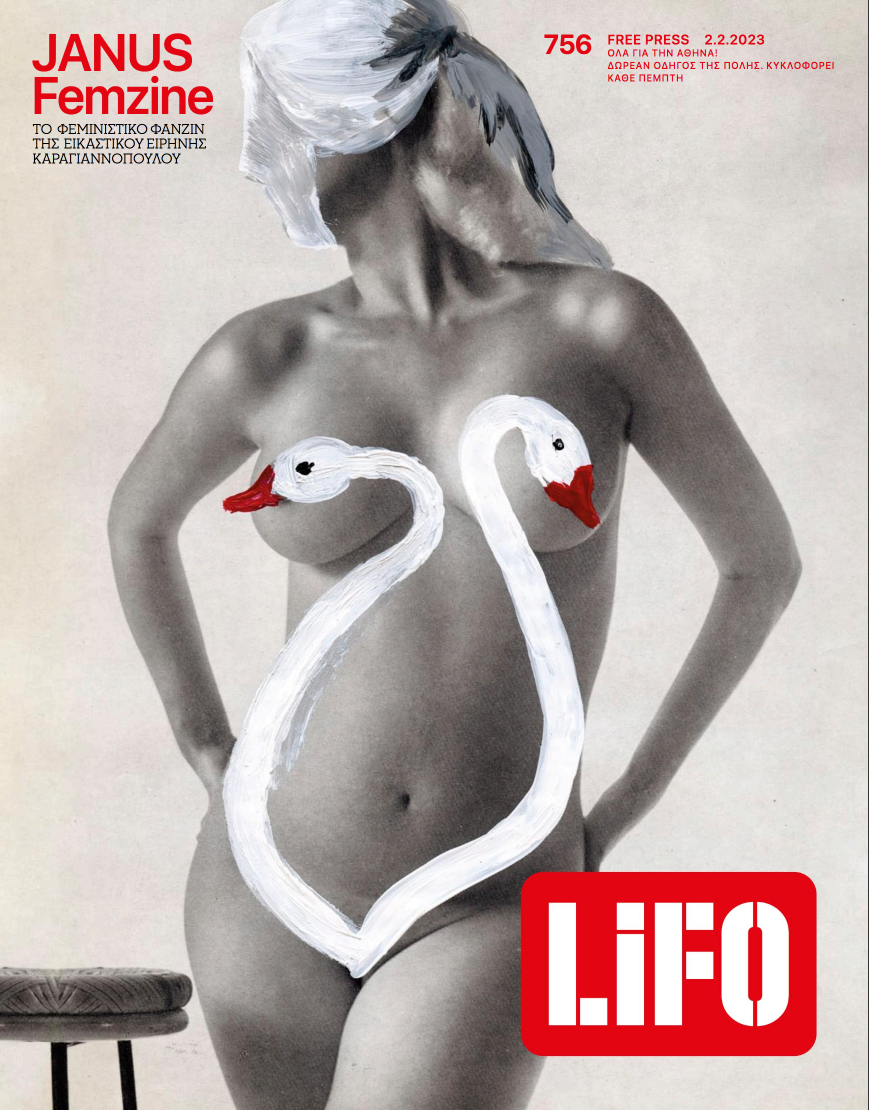
Janus Femzine on the cover of LIFO magazine

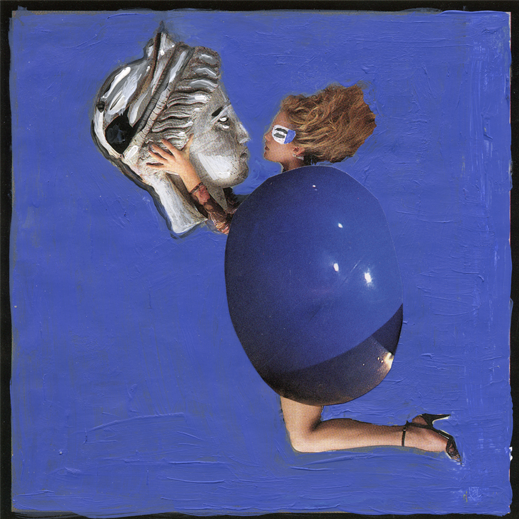
Art Athina
International Contemporary Art Fair of
Athens, Greece, A.Antonopoulou gallery
September 16 – 19, Zappeion Mansion
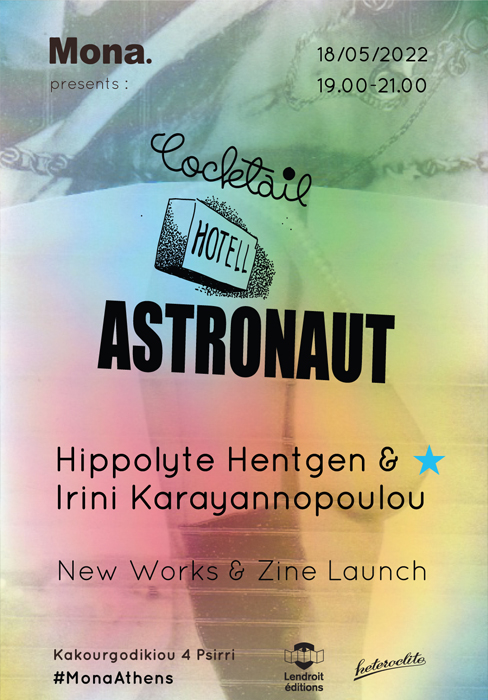
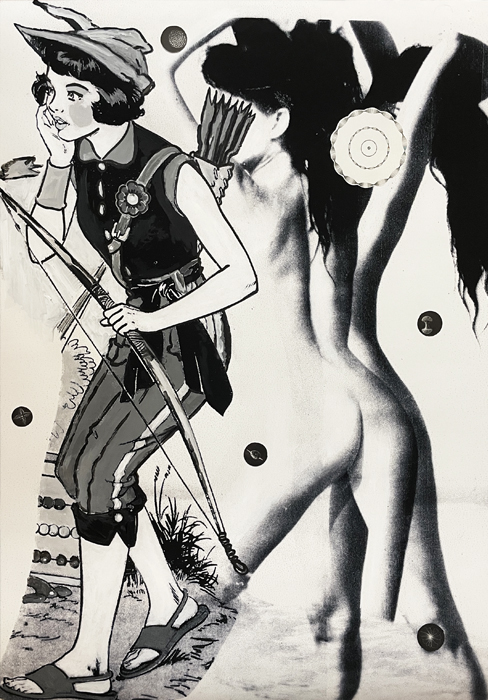
Cocktail Hotell Astronaut
ongoing
Mona
Athens, Greece
New large scale works on paper that comprise collage, painting and print.
A project curated by Eftihia Stefanidi.
As well as, a spontaneous correspondence between Irini Karayannopoulou and Paris artist duo Hippolyte Hentgen, who over quarantine exchange images of rare antique objects, retro erotica, photocopies, stickers and curiosities, result to a series of works and to a new artist zine in collaboration with L’endroit Editions.
Fiercely revisiting these found materials using xerox, painting and collage, Cocktail Hotell Astronaut is a DIY reflection on sexuality, pop histories and sisterhood.

Life on Venus
19.03.2022 – 02.04.2022
Polana Institute
Warsaw, Poland
Irini
Karayannopoulou draws inspiration from collective sexual fantasies,
lusty dreams and the basic human need not to feel alone, both in and
outside our planetary system. The artist audaciously continues the
erotic scenes that she discovers in erotic magazines, in quest of an
alternative ”happy ending”. As she humorously deconstructs the
preconceptions of sexual representation as we know it, she presents us
with a new corporeality, one that is actually governed by Venus -or
Aphrodite, or Ishtar. Irini introduces us to a new kind of voyeurism
that praises sexual liberation from a feminin perspective.Irini
Karayannopoulou photographs every step of the painting process and
creates a stop motion painting animation (signed by Twin Automat).
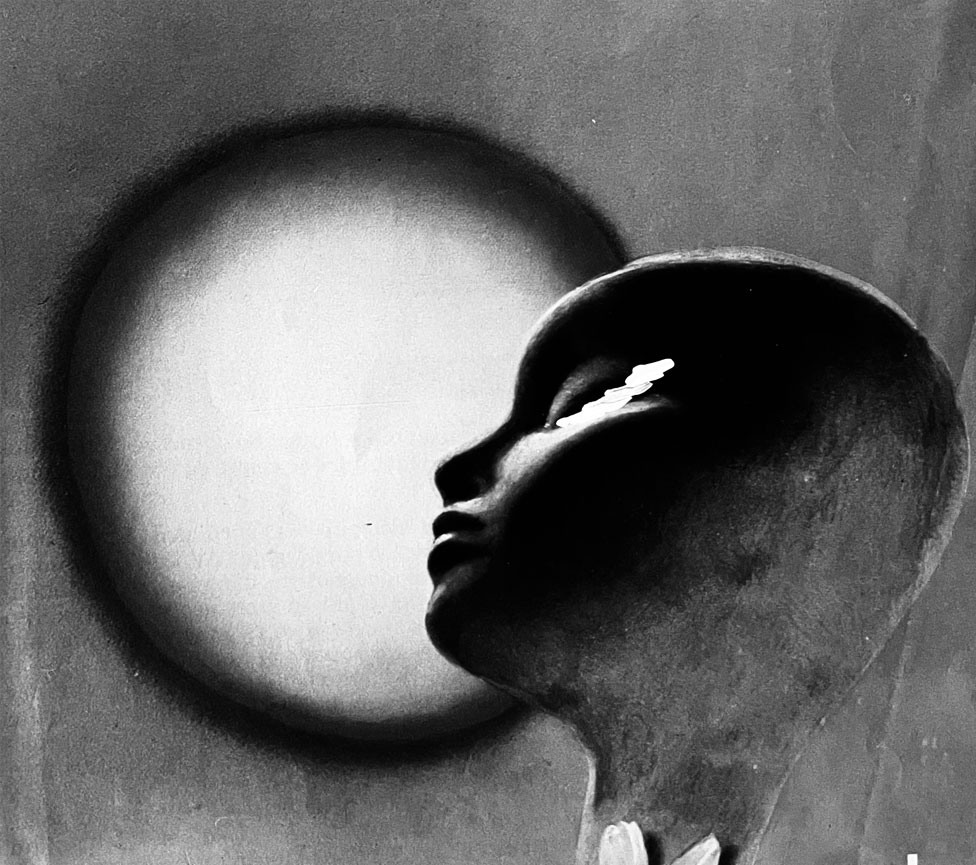
Hotberg
02.12.2021 – 22.01.2022
a.antonopoulou.art
Athens, Greece
1. Crossings to emancipation
Is there such a thing as a “volcano woman” (Hotberg)? Might be. An iceberg one? Maybe. Or maybe not, cause our times are imperatively rectifying male prejudices and stereotypical views of eroticism and the female erotic body.
In her own special way, decisive but not violent, humorous and cheeky, Irini Karayannopoulou settles her accounts with the mechanisms that treat women as objects. In two moves: the first involves tearing out ad pages from vintage women’s magazines; the second, the deletion of logos and faces. Then, like an ingenious kidnapper asking for ransom by sending letters made up of phrases from various newspaper clippings, she composes her comments addressed to the collective body that questions womanhood and uses them to caption her faceless body images.
Her work is ethereal and brutal. Her videos and images resemble allegories or myths – or, in fact, dreams. A dense layering, awash with visual metaphors and symbols that function with the autonomy the artist grants them as tokens of her peculiar rebellion against gender and identity stereotypes.
The experiments in image appropriation result in radiant and psychedelic details so intense to the eye – the back of a neck, the collapse of facial features, the colour of water – that they seem to be transmitted directly from or through a conscious dive into the unconscious. Only to recur to the viewer at odd moments, like a puzzle the mind is trying to solve.
Irini Karayannopoulou’s creative concerns are very specific: the female confronts the male in exchanges characterized by both violence and desire. The use of deterritorialization to induce psychological states. A narrative preference for iconic heroines juxtaposed with terror, desire and grandeur.
With her solo exhibition Hotberg, Irini Karayannopoulou continues what in her previous works has been presented as her personal strange pleasure, that is, to eliminate the hypocrisy that often exists in the imaginary world of women’s magazines. And to paint her own face on fashion images with rough brushstrokes or to create a different environment with a few lines, altering the atmosphere. This is her way of “disturbing”, by upsetting the flawless female print universe with her shifts. In every image she looks for something that will “touch” her. She starts with tactile stimuli, i.e. with some textures that will catch her attention. It can be a body line, a garment, a look, a gesture, a slogan. It can be the way a face is made up, the way someone’s hair is arranged. Without any strategic preparation, she intervenes aggressively, without testing, taking direct risks and interfering with the image. In her practice she endorses and pursues impetuous immediacy.
With this exhibition, Irini Karayannopoulou reflects on female sensuality from a metaphysical perspective, while negotiating female emancipation in her own, unapologetic way. The artist paints directly on the pages of vintage magazines. She paints on photographs she discovers in old erotic postcards. She then enlarges these images and paints them again until she runs out of material. In the Hotberg series, some appear as prints, some become moving images, and others accumulate in collages, as endless possibilities for the artist’s own experimentation.
So we can even see Hotberg as a political commentary on the uses and appropriation of female images by women; as a possibility of desire and transformation, since images play a fundamental role in the construction and transformation of subjects.
2.A celebration of images
Hotberg is a celebration. Irini Karayannopoulou’s protagonists inevitably acquire new passports as they undergo new transformations. All kinds of possibilities are unfolding, being tested, as the process expands. Forgotten, anonymous sex dolls of decades past are alchemically transformed into powerful, sensual figures who take on the new roles assigned to them by the artist. Hotberg acts as a subtle portal to emancipation. Passing through Hotberg leads to another dimension where anything is possible. In such emancipation through images nothing is impossible.
In her collages, the artist explores the hagiography of professional strippers and gamblers. She obsessively collects advertising slogans from Las Vegas casino listings and juxtaposes the promises of wealth and prosperity established through marketing from the pages of the obsolete publications she has collected.
The same exhibition features her intervention in a series of tiny rare postcards printed in France in the 1950s depicting topless ladies posing lasciviously. In her findings, one of them is holding a glass of champagne; another is holding a mirror, or a bouquet of flowers. The artist “steals” their identities and re-paints their faces, replacing their eyes with a mask. As she gives them back their anonymity, she enters another dimension, slips and shifts into another moment in time.
Her dark oil paintings of faceless torrents of hair intermingle with masked creatures courting each other as they interface in an almost supernatural way. As a valuable part of her practice, these paintings serve as mementos from the realm of the unconscious, where the artist often immerses herself. Hotberg is a poetic transformation of women’s imagery, turning the viewer’s visual unconscious into an image.
3.Sensory capsule: Hypnothèque
Hypnothèque* is a sensual video capsule where women are suspended in a state between piety and unconsciousness, desire and death. They close their eyes and engage in the dance steps that lead them to transformation. Where there is tenderness, something is left unattended. Tenderness invites into a state of suspended animation, a moment of agony. This is where the care or the real pain comes next. A multitude of strange but sensual incidents occur in full morphological fluidity. As painting transforms these images from still to moving, faces blur, eyes close, identities dissolve. Hypnothèque is an act of visual, sonic, rhythmic meditation; an act of transition to immaterial and perpetual transformation. Writing about “Impressionism”, the Franco-Uruguayan poet Jules Laforgue writes something that seems valuable to such an approach: “The visual arts derive from the eye and only from the eye”. The eye that desires, thinks, feels and acts.
* Hypnothèque is a “handmade animation”, the result of collaboration between the artist and French editor Sandrine Cheyrol. The soundtrack was composed by psychiatrist and sound artist Christos Kalafatis.
Efi Falida
translated by Angeliki Kouroutzi
Her work is ethereal and brutal. Her videos and images resemble allegories or myths – or, in fact, dreams. A dense layering, awash with visual metaphors and symbols that function with the autonomy the artist grants them as tokens of her peculiar rebellion against gender and identity stereotypes.
The experiments in image appropriation result in radiant and psychedelic details so intense to the eye – the back of a neck, the collapse of facial features, the colour of water – that they seem to be transmitted directly from or through a conscious dive into the unconscious. Only to recur to the viewer at odd moments, like a puzzle the mind is trying to solve.
Irini Karayannopoulou’s creative concerns are very specific: the female confronts the male in exchanges characterized by both violence and desire. The use of deterritorialization to induce psychological states. A narrative preference for iconic heroines juxtaposed with terror, desire and grandeur.
With her solo exhibition Hotberg, Irini Karayannopoulou continues what in her previous works has been presented as her personal strange pleasure, that is, to eliminate the hypocrisy that often exists in the imaginary world of women’s magazines. And to paint her own face on fashion images with rough brushstrokes or to create a different environment with a few lines, altering the atmosphere. This is her way of “disturbing”, by upsetting the flawless female print universe with her shifts. In every image she looks for something that will “touch” her. She starts with tactile stimuli, i.e. with some textures that will catch her attention. It can be a body line, a garment, a look, a gesture, a slogan. It can be the way a face is made up, the way someone’s hair is arranged. Without any strategic preparation, she intervenes aggressively, without testing, taking direct risks and interfering with the image. In her practice she endorses and pursues impetuous immediacy.
With this exhibition, Irini Karayannopoulou reflects on female sensuality from a metaphysical perspective, while negotiating female emancipation in her own, unapologetic way. The artist paints directly on the pages of vintage magazines. She paints on photographs she discovers in old erotic postcards. She then enlarges these images and paints them again until she runs out of material. In the Hotberg series, some appear as prints, some become moving images, and others accumulate in collages, as endless possibilities for the artist’s own experimentation.
So we can even see Hotberg as a political commentary on the uses and appropriation of female images by women; as a possibility of desire and transformation, since images play a fundamental role in the construction and transformation of subjects.
2.A celebration of images
Hotberg is a celebration. Irini Karayannopoulou’s protagonists inevitably acquire new passports as they undergo new transformations. All kinds of possibilities are unfolding, being tested, as the process expands. Forgotten, anonymous sex dolls of decades past are alchemically transformed into powerful, sensual figures who take on the new roles assigned to them by the artist. Hotberg acts as a subtle portal to emancipation. Passing through Hotberg leads to another dimension where anything is possible. In such emancipation through images nothing is impossible.
In her collages, the artist explores the hagiography of professional strippers and gamblers. She obsessively collects advertising slogans from Las Vegas casino listings and juxtaposes the promises of wealth and prosperity established through marketing from the pages of the obsolete publications she has collected.
The same exhibition features her intervention in a series of tiny rare postcards printed in France in the 1950s depicting topless ladies posing lasciviously. In her findings, one of them is holding a glass of champagne; another is holding a mirror, or a bouquet of flowers. The artist “steals” their identities and re-paints their faces, replacing their eyes with a mask. As she gives them back their anonymity, she enters another dimension, slips and shifts into another moment in time.
Her dark oil paintings of faceless torrents of hair intermingle with masked creatures courting each other as they interface in an almost supernatural way. As a valuable part of her practice, these paintings serve as mementos from the realm of the unconscious, where the artist often immerses herself. Hotberg is a poetic transformation of women’s imagery, turning the viewer’s visual unconscious into an image.
Hypnothèque* is a sensual video capsule where women are suspended in a state between piety and unconsciousness, desire and death. They close their eyes and engage in the dance steps that lead them to transformation. Where there is tenderness, something is left unattended. Tenderness invites into a state of suspended animation, a moment of agony. This is where the care or the real pain comes next. A multitude of strange but sensual incidents occur in full morphological fluidity. As painting transforms these images from still to moving, faces blur, eyes close, identities dissolve. Hypnothèque is an act of visual, sonic, rhythmic meditation; an act of transition to immaterial and perpetual transformation. Writing about “Impressionism”, the Franco-Uruguayan poet Jules Laforgue writes something that seems valuable to such an approach: “The visual arts derive from the eye and only from the eye”. The eye that desires, thinks, feels and acts.
She: Classicità
30.09 – 03.10.2021
Polana Institute
Warsaw Gallery Weekend
Artists: Zuzanna Czebatul, Barbara Falender, Maïmouna Guerresi, Irena Kalicka, Irini Karayannopoulou, Magdalena Karpińska, Shana Moulton, Apolonia Sokol
Museum of the University of Warsaw
Tyszkiewich-Potocki Palace
Krakowskie Przedmieście 32, 00-927 Warsaw
The theme of classicism in the 1920s and 1930s came to the curators’ attention primarily through two exhibitions: Realismus: Zwischen Revolution und Reaktion’ from 1981 and ‘On Classic Ground. Picasso, Léger, de Chirico and the New Classicism 1910-1930’, from 1990.
Elena Pontiggia, the curator of the Italian version of the pan-European “return to order”, has found the most apt name for this tendency: modern classicità. The temptation to search for harmony, classical ideas and Renaissance inspirations was not resisted by the likes of Picasso, Georges Braque, Carlo Carrà, Giorgio de Chirico.
Although some artists in the 20th and 21st centuries, especially those from the Mediterranean basin, tried to use the motifs characteristic of antiquity and the Renaissance (Italian artists smuggled classical themes into pop-art and in the conceptual art and trans-avant-garde of the 1980s), these attempts have never matched the work of the painters of the so-called “return to order” of the 1920s and 1930s.
One hundred years later, contemporary female artists boldly formulate their own reception of antiquity – independent, and often in opposition to patriarchal visions. Their return to taking inspiration from antiquity and art history seems very mature, intelligently filtered through the problems of the present, and without the burden of having to worship the old masters. The contemporary classicità is a woman.
The woman is not, as in the case of artists from the 1920s and 1930s, merely a pretext to paint a nude symbol, but as the subject, the main character. In this story, Ulysses is replaced by Penelope who returns to herself after a journey that is a metaphor of reaching maturity, wider perspective and self-awareness.
Justyna Wesołowska & Marika Zamojska
Sleeping Odyssey
Polana Institute
Warsaw Gallery Weekend
30.09 – 03.10.2021
Throughout art history painters portrayed female figures in reclining mode or dormant state. Sleeping beauties are omnipresent in mythology, and nymphs are often portrayed sleeping or reclined. From the sexual submission of the odalisques, to feasting Romans, from Manet’s Olympia to Henry Moore’s human landscapes and to Brancusi’s female head, this posture implies that a person is being waited upon, served, highly appreciated, admired, honoured, but also watched, questioned, judged, imprisoned, intoxicated.
Sleeping Odyssey is a site-specific installation conceived by Irini Karayannopoulou for the Warsaw Puro Hotel. In this contemporary version of the Sleeping Beauty tale, women are suspended in a state between reverie and fainting, sexual desire and death. Their faces in the hotel windows look calm, their positions announce the return of bliss. Although they are seemingly open to the gaze of passers-by, chances are they have secrets to hide.
Sleeping Odyssey is a promenade into the unconscious, hand in hand with the pause of sleep.







